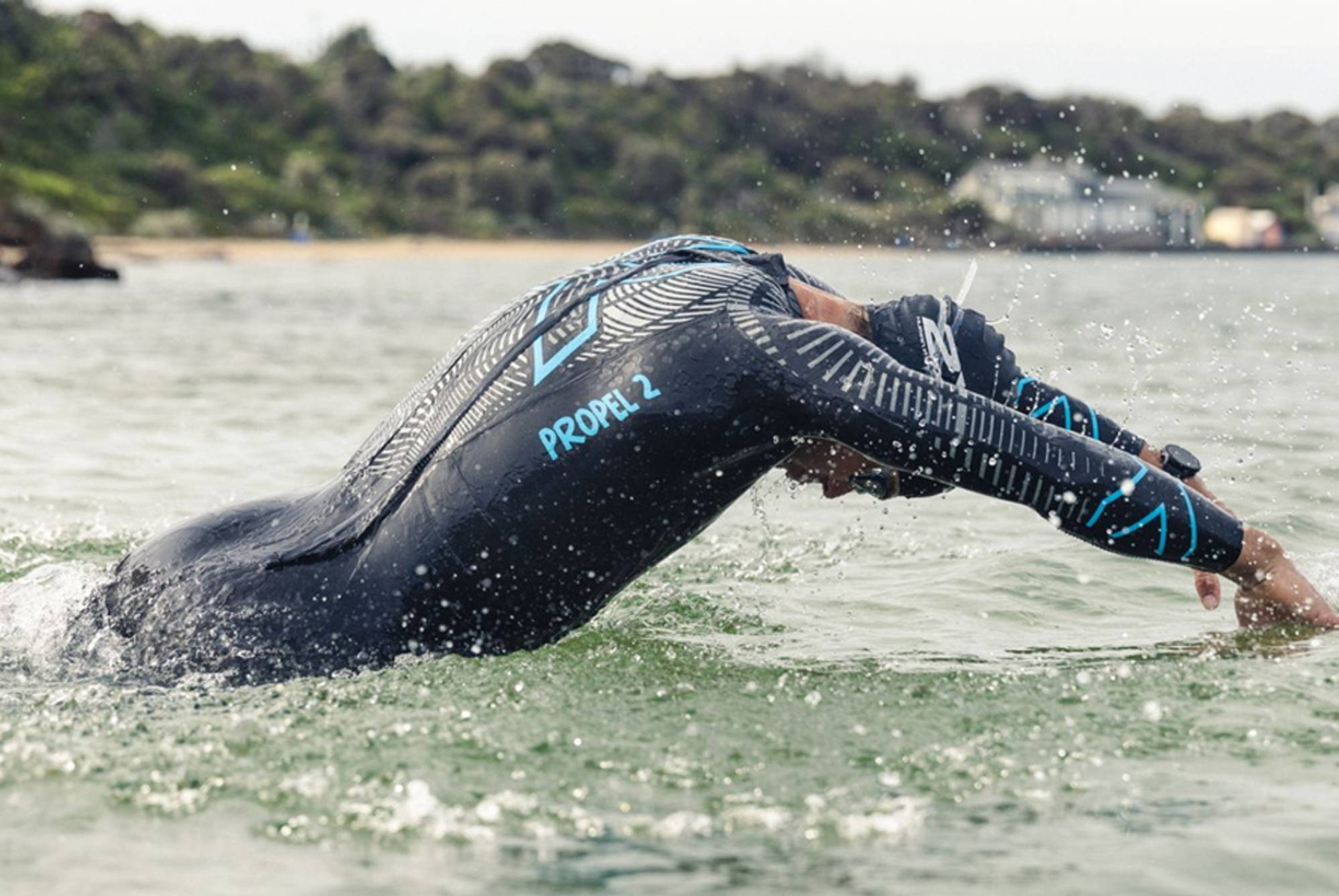Die meisten Triathleten kennen ihre offenen Gewässer und die markanten Punkte zur Orientierung. Diese werden bei den Freiwassereinheiten oftmals im nach dem gleichen Schema "abgeschwommen". Wie immer heißt das Motto: Trainingsvariation. Wer im See stets die gleiche Strecke im gleichen Rhythmus abspult, stagniert. Daher findest Du hier die wichtigsten Tipps, wie Du Dein Freiwassertraining abwechslungsreicher und effektiver gestalten kannst.
1. NEUE BEZUGSPUNKTE
Steuerst Du deine Orientierungspunkte aus einer anderen Perspektive genauso zuverlässig an? Wettkämpfe finden i.d.R in Gewässern statt, in denen Du nicht regelmäßig trainierst. Suche Dir hin und wieder neue Orientierungspunkte oder schwimme Deine Runde in entgegengesetzter Richtung, so stellst Du Deinen Orientierungssinn immer wieder vor eine neue Herausforderung.
2. ATMUNG & ORIENTIERUNG
Probiere Atmungvariationen aus. Kommst Du mit einer 3-er Atmung im Freiwasser genauso gut zurecht, wie mit Deiner 2-er Atmung im Becken? Schwimmst Du geradliniger, wenn Du wechselseitig atmest? Probiere auch mal die 2-er Atmung zu Deiner "schwachen" Seite zwischen zwei Orientierungspunkten aus. Auch damit erreichst Du eine Änderung Deiner Perspektive - Bezugspunkte auf Deiner schwachen Seite könnten eventuell viel bessere Orientierunghilfen sein. Diese siehst Du aber nicht, wenn Du zur anderen Seite atmest.
3. LAGENSCHWIMMEN
Auch im See musst Du nicht die komplette Strecke im Kraulstil absolvieren. Kombiniere zwischen zwei Orientierungspunkten die Schwimmlagen: z.B. 30 Züge Kraul - 30 Züge Rücken - 30 Züge Kraul - 30 Züge Brust...etc. Dieses Schema kannst Du nach Belieben abwandeln. Wenn möglich, kombiniere das Ganze auch mit Delfinschwimmen - mit Neo funktioniert es deutlich leichter und Du kannst es mal richtig krachen lassen.
4. TEMPOWECHSEL
Wie im Becken sind Tempovariationen das Schlüsselelement gegen monotones Dauerplanschen. Ähnlich wie beim Lagenschwimmen (siehe 3.) kannst Du hier mit Tempowechseln für Abwechslung sorgen und damit einen höheren Trainingseffekt erzielen: z.B. 30 Züge Tempo - 15 Züge locker - 30 Tempo - 15 locker... Auch hier kannst Du nach Belieben abwandeln. Suche Dir zwei Deiner Bezugspunkte (Boje, Bootssteg o.ä.) und nutze sie als "Beckenrand" - egal, ob sie 80m oder 250m voneinander entfernt sind. Verwende diese Punkte einfach als Pendelstrecke und schwimme hier verschiedene Tempoelemente - wie im Becken.
Übrigens: Achte beim Tempotraining genauso auf Deine Orientierung! Schwimmst Du im Tempomodus noch genauso geradlinig, wie beim lockeren Dauerschwimmen? Für die Orientierung im Wettkampf ist das Tempotraining daher extrem wichtig, da sich die Dynamik Deiner Schwimmtechnik verändert.
5. WETTKAMPFSITUATIONEN ÜBEN
Verschiedene Situationen in einem Wettkampf sind kritisch: vor allem der Start, aber auch das An- und Abschwimmen von Bojen oder auch ein kurzer Landgang. Diese Situationen kann man auch im Training üben, um im Wettkampf nicht überrascht oder überfordert zu sein.
Startübungen: Simuliere den Start als Landstart (vom Strand ins Wasser laufen) oder Wasserstart (schwebend ohne Bodenkontakt) indem Du 30/40/50 Züge Vollgas gibst - das ist die stressigste Phase in einem Wettkampf - dann erst schwimmst Du ein paar Züge locker weiter, kehrst um und wiederholst die Prozedur. Das verschafft Dir auch mental viel mehr Sicherheit zum Wettkampfbeginn. Besonders viel Spaß macht diese Übungsform in einer Gruppe: Wer zuerst bei der ersten Boje ist...
Richtungswechsel/Bojen: Im Wettkampf markieren Bojen oftmals 90-Grad-Richtungwechsel - viele Schwimmer steuern gleichzeitig auf einen einzigen Punkt zu, an dem es eng wird und von dem aus man sich wieder neu orientieren muss. Erfahrene Triathleten erhöhen vor einer Boje die Schwimmgeschwindigkeit, um sich vom Pulk abzusetzen und die Boje ungehindert umschwimmen zu können. Steckst Du in einem solchen Pulk fest, ensteht oftmals ein Stau, aus dem Du nicht herauskommst. Übe daher auch im Training, zunächst Bojen gezielt anzusteuern und einen Richtungswechsel zu vollziehen, bei dem Du zur Orientierung nicht erst ins Brustschwimmen verfallen musst. Trainiere im nächsten Schritt eine Tempoverschärfung auf 50-80m vor der Boje.
Landgang: Manche Schwimmstrecken werden durch einen kurzen Landgang geteilt. Das unterbricht den Schwimmrhythmus und man kommt aus der waagerechten Schwimmlage in die aufrechte Laufposition um nur wenig später wieder losschwimmen zu müssen. Landgänge stellen daher auch muskulär eine Herausforderung dar - ebenso wie für den Gleichgewichtssinn. Trainiere einen solchen Landgang einfach, wenn die Schwimmstrecke Deines Wettkampfs einen Landgang enthält. Nach einer längeren Schwimmdistanz (mind. 400m) kommst Du aus dem Wasser und läufst 20 m am Strand entlang, um dann wieder ins Wasser hineinzulaufen und loszuschwimmen. Bei dieser Gelegenheit lässt sich auch gut üben, wie Du Dich im seichten, hüfthohen Wasser am schnellsten fortbewegst: waten, schwimmen, Delfinsprünge? Probiere aus, was für Dich am besten funktioniert.




















